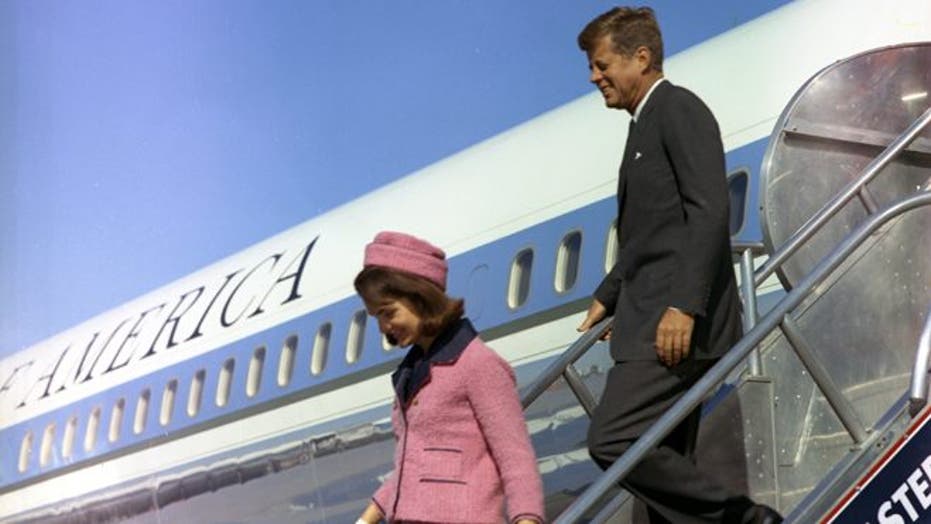Fifty years ago today, President John F. Kennedy died, a stunned nation grieved and a million conspiracy theories were born.
It was just after noon local time on Nov. 22, 1963, when the limousine carrying Kennedy entered Dealey Plaza in Dallas, its bubble top down so a smiling president, riding in the back seat with First lady Jackie Kennedy, could wave to an adoring crowd. The boyish president, a World War II Navy hero, author and former U.S. senator from Massachusetts, was just 46 and not quite three years into his first term as commander-in-chief.
"Kennedy had become a talented and incandescent politician. He had developed stage presence and star quality," wrote Thomas E. Cronin, author of "Leadership Matters," in a recent Denver Post editorial. "He served as president just as pride in America was at its peak."
A nation on the cusp of huge cultural shifts that would usher in civil rights for African Americans, the era of hippies, the Vietnam War and more heartbreaking assassinations, was still in an age of relative innocence. "The Andy Griffith Show" played on black and white televisions, a popular hit on solid state radios was "Blue Velvet" and the top movies included "The Great Escape."
Kennedy, in the home state of Vice President Lyndon Johnson, had a busy day lined up. He had spent the night at Hotel Texas in Fort Worth, read the Dallas Morning News — which on that day carried an ad accusing him of treason — and delivered two speeches before boarding Air Force One for a 15-minute flight to Dallas’ Love Field. The motorcade set off, via Main Street in downtown Dallas, for the Trade Mart, where Kennedy was to deliver yet another speech. He and the first lady planned to spend the night at Johnson’s ranch near Austin.
Suddenly, as the 1961 Lincoln convertible entered Dealey Plaza, shots rang out from the Texas School Book Depository at 12:29 p.m. In the grainy yet indelible image caught on the amateur footage that would come to be known as the Zapruder film, Kennedy’s head snaps forward and he slumps next to the horrified first lady. Kennedy, who had insisted on the limo being uncovered, had also directed Secret Service agents to ride in the car behind him. After he was shot, they can be seen on the film scrambling to the back of the limo.
Texas Gov. John Connally, riding in the middle row of the limousine with his wife, Nellie, turned to the right attempting to see President Kennedy behind him. As he did, he was hit in his upper right back and shouted, "Oh, no, no, no. My God. They're going to kill us all!"
Connally would recover, but it would be a long time before the nation did.
The events that followed played out like a real-time drama. In the frenzied aftermath of the shooting, Oswald scurried out of the depository and boarded a bus. Police had a description of the shooter from a witness who had heard the shots and looked up to see Oswald looking out a window. Just over an hour after the president was killed, Dallas cop J.D. Tippit spied Oswald on a sidewalk in Oak Cliff, about three miles from Dealey Plaza. When Tippit went to confront him, Oswald shot the police officer dead and sneaked into a movie theater. But an alert witness saw him acting suspiciously and called police. Just 70 minutes after killing the president, Oswald was in police custody.
An Italian-made Carcano bolt-action rifle believed to have been Oswald’s was found on the sixth floor of the book depository. Bullet fragments found on Connally's hospital gurney and in the limo matched it, but speculation has persisted that one, or even two other shooters may have fired some of the shots that day.
Charged with the murders of President Kennedy and Officer Tippit, Oswald shouted, “I’m a patsy,” as police dragged him into Dallas Police Headquarters. He would never get to present that defense to a jury because two days later, as he was being moved to the Dallas County Jail, local nightclub owner Jack Ruby shot and killed him in a moment caught on life television.
Although Ruby would later say he acted to spare Jackie Kennedy any more grief, the shooting of Kennedy’s assassin undoubtedly fueled the conspiracy theories that perpetuate even today. Oswald’s “patsy” claim, the secrecy surrounding a subsequent investigation and amateur ballistics speculation have only added to suspicions that there was more to the murder of John F. Kennedy than the twisted motives of a lone gunman.
Over the years, theories have emerged involving the CIA, the Mafia, Cuba, Russia and even Johnson, Kennedy's successor. The trajectory of the three bullets fired that day has been dissected, countless books have been written putting forth various versions of events and several films have sought to get to the bottom of what happened on that day a half-century ago.
A nearly year-long probe two years later by the Warren Commission concluded that both Oswald and Ruby acted alone. It did little to quell conspiracy speculation, and in 1978, the United States House Select Committee on Assassinations concluded that Kennedy was likely killed as part of a conspiracy, saying that there was “a high probability that two gunmen fired at [the] President.” As for who might have conspired with the self-styled communist who had defected to Russia, the Congressional committee pointed no fingers.


